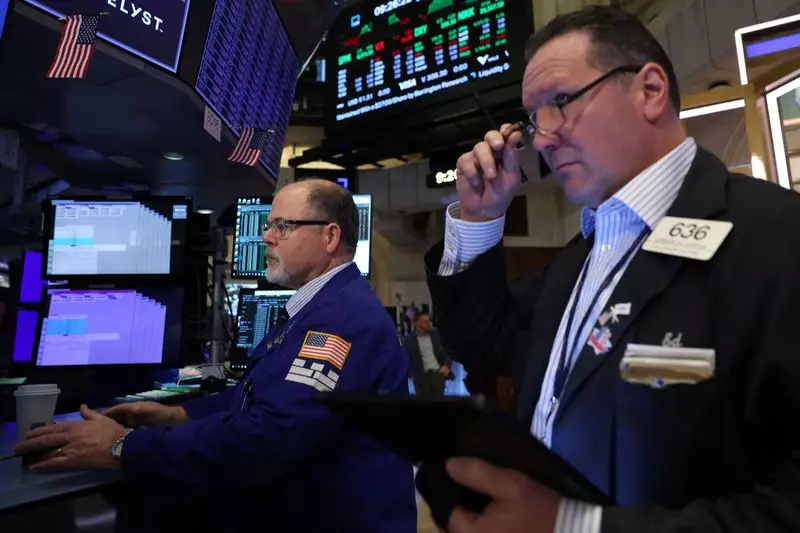On a Friday morning poised with expectancy, U.S. stock index futures showed signs of a modest uptick, hinting at a potentially positive day for investors. At 5:40 a.m. ET, the Dow E-minis indicated an increase of 85 points, representing a 0.20% rise. Similarly, S&P 500 E-minis climbed by 16.25 points (0.27%), while Nasdaq 100 E-minis surged by 85.25 points, or 0.40%. This tentative optimism can arguably be attributed to the anticipation surrounding forthcoming economic data that investors are eagerly monitoring. The focus is also on the likely regulatory and fiscal changes that could unfold with the upcoming Trump administration.
Despite the uplifting futures, Wednesday’s market performance illustrated a conflicting sentiment with Wall Street experiencing a rough beginning to the year. The major indices suffered losses after initially registering gains, illustrating a departure from the typical bullish trend historically observed during this period. Notably, all three principal indices concluded lower for four consecutive sessions on Thursday, indicating a potential correction. The S&P 500 and the Dow are projected to face weekly dips surpassing 1%, whilst the tech-heavy Nasdaq is skirting a drop closer to 2%.
The technology sector, which had previously been instrumental in driving market gains over the last two years, found itself particularly vulnerable in this early phase of the year. Amidst concerns of uncertain policy directions from the incoming Trump administration, volatility remains a pressing issue for tech stocks.
Much of the uncertainty arises from President-elect Trump’s proposed policies, which aim to reshape various facets of the economy. His administration’s stance on corporate taxation, regulatory frameworks, trade tariffs, and immigration is fundamental to prospects of corporate profitability. While intended to invigorate economic growth, these proposals harbor the potential to ignite inflation, complicating the Federal Reserve’s monetary policy landscape.
As the newly-elected Congress congregates for its first session, the markets remain acutely aware of the implications these policy frameworks may hold. The Federal Reserve’s decisions, particularly regarding interest rates, will be scrutinized closely. According to the CME Group’s FedWatch Tool, traders are anticipating a significant 50 basis points reduction in the Federal Reserve’s interest rate strategy throughout the year, contingent upon continuing signs of economic resilience.
Investors are on the lookout for timely economic indicators that could influence market behavior. The Institute for Supply Management (ISM) report on manufacturing activity for December is expected to provide essential insights later in the day. Only a week later, labor market figures will also be released, adding another layer of analysis to the economic landscape.
Richmond Fed President Thomas Barkin is set to synthesize his thoughts on the economic outlook, becoming one of the first policymakers to voice his perspectives this year. His insights could play a vital role in shaping investor sentiment and could potentially mitigate some of the uncertainty that currently engulfs the markets.
Another key point of concern for investors lies in the stretched equity valuations that have emerged in tandem with prolonged bullish trends on Wall Street. Despite the prevailing environment, many brokerage firms maintain a positive outlook for U.S. stocks, primarily bolstered by projected robust corporate earnings. As firms prepare to release their earnings reports, investor reactions could significantly influence market dynamics, especially considering the possibility of an extended bull run.
Specific stocks are also under the lens, with Tesla displaying fluctuating performance levels—showing a 1.1% increase in premarket trading following a significant drop due to lower-than-expected quarterly deliveries. Additionally, U.S. Steel finds itself amid controversies surrounding President Biden’s decision to block a $14.9 billion acquisition by Nippon Steel, which may complicate future investment considerations.
As we embark on a new year, the cocktail of geopolitical shifts, economic indicators, and corporate earnings will all serve as critical components in navigating the complex market landscape. With unpredictable external factors at play, investors must remain vigilant and adaptable to seize potential opportunities amidst the turbulence. Ultimately, as both a barometer and a participant in the economy, the stock market’s reactions will reflect the underlying sentiment of consumer and investor confidence as they digest unfolding developments in the political and economic spheres of the U.S.

